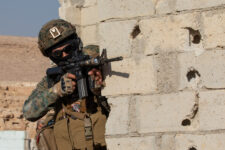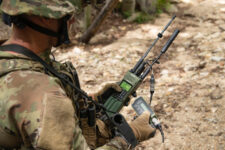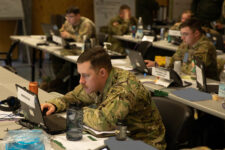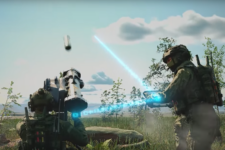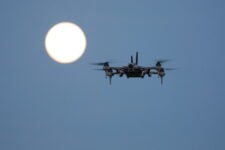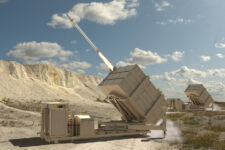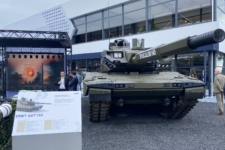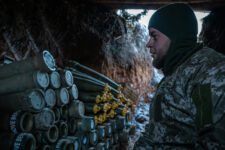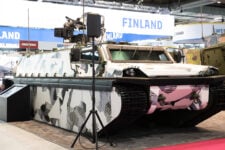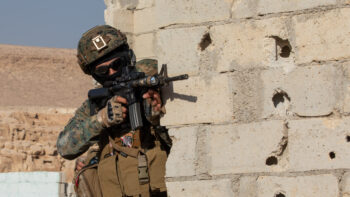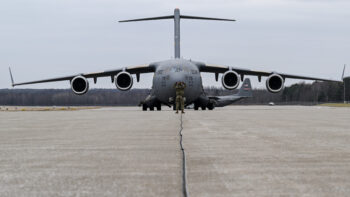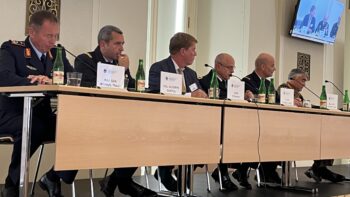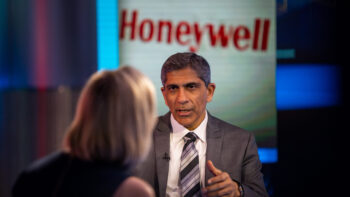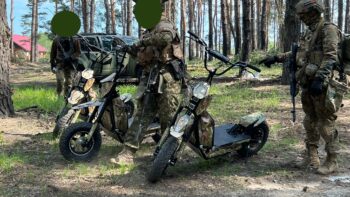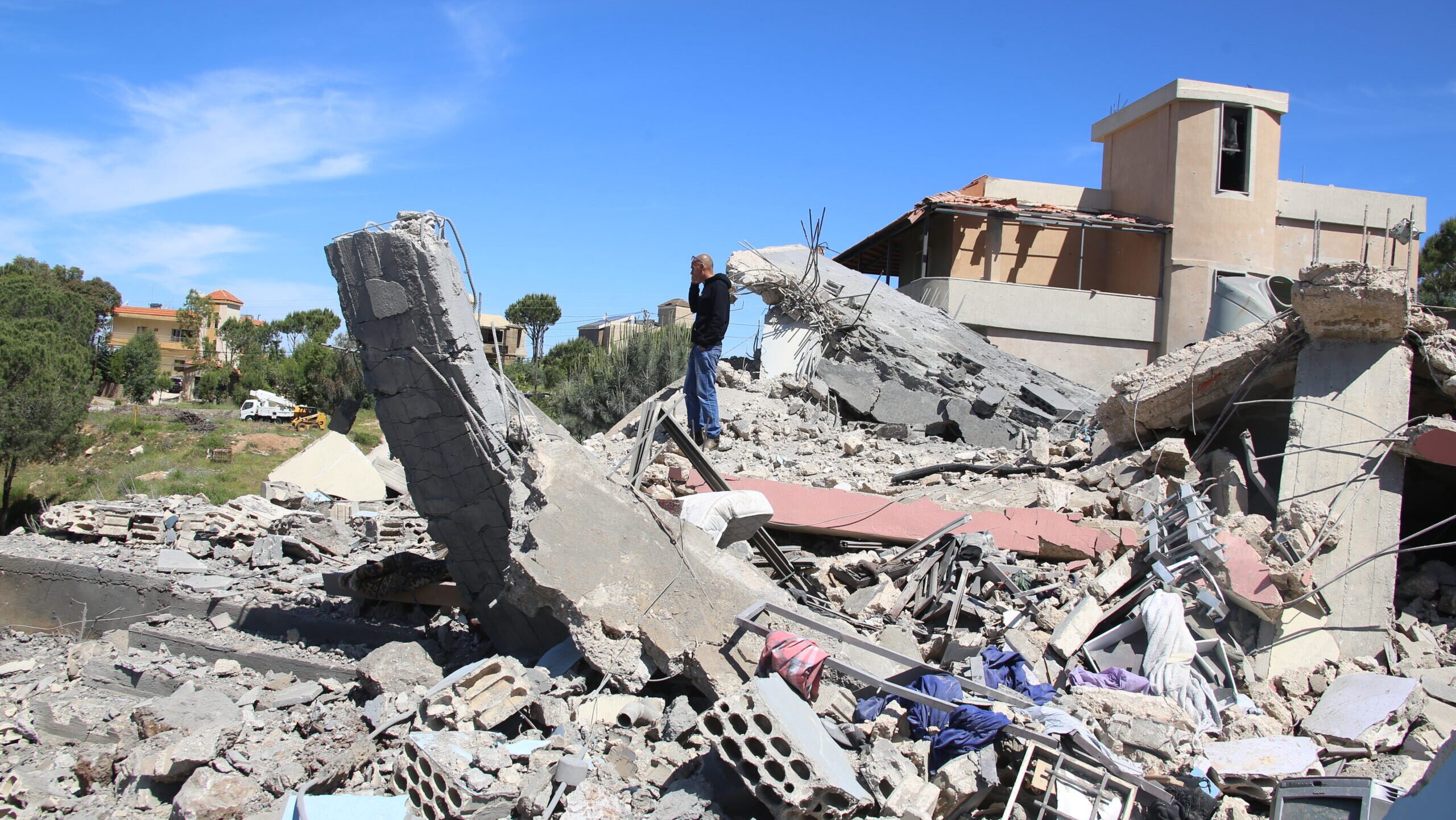
A view of damage after Israeli air strike hits Kafr Hamam town in Hasbaya district in southern Lebanon on May 08, 2024. As a result of the attack, several houses sustained damage. Local residents assessed the affected structures in the aftermath of the attack. (Ramiz Dallah/Anadolu via Getty Images)
SOUTH LEBANON — Last Saturday served as the eight month anniversary of the conflict launched by Hezbollah in the wake of the Oct. 7 attacks in Israel, and while the situation has not escalated to all-out war between the Iran-backed group and Israel, the southern part of Lebanon has suffered scars that may never be healed.
Recently, Breaking Defense took a trip to the south of Lebanon to understand the impact the conflict has had there, where thousands have fled but many remain in almost constant danger. The journey provided a shocking contrast to what the region looked like on Oct. 6, 2023: instead of celebrations and the chatter of voices in villages, the entire area has a haunted, abandoned air. The most common sounds reverberate loudly: the explosions of rockets, bombs and missiles intercepted overhead or landing, occasionally, in the villages themselves.
Lebanon now feels as if the 4,000 square mile-sized country is shattered into two realities: one north of the Nabatieh district, more or less carrying on as normal, and the rest as another country in the grips of war.
Beirut — the “Paris of the Middle East,” a vibrant, party-loving, multi-ethnic community — is clutching firmly to its character, and life moves at a fairly normal pace, even if the skies are interrupted occasionally with passing missiles and drones launched from elsewhere. Even when protests boil over, they have largely been confined to the area around the American embassy, including last week’s one man assault by a Syrian immigrant that resulted in an embassy security guard being injured.
But life in the south is completely different.
Following the Oct. 7 attacks by Hamas against Israel, Hezbollah pledged its support for the Palestinian group — albeit it, in a limited fashion — in the Gaza conflict, and has been lobbying rockets and drones over the border towards Israel ever since, sparking Israeli strikes in retaliation.
According to figures compiled by Reuters, roughly 300 Hezbollah fighters have been killed in the exchanges, as well as 80 civilians. According to Israeli figures, strikes incoming from Lebanon have killed 18 Israeli soldiers and 10 civilians. The violence has forced large numbers of civilians on both sides of the border to leave their homes. A recent statement from Médecins Sans Frontières claimed that 93,000 Lebanese have been displaced from their homes since the start of the conflict.
That number is hard to confirm, but on the ground here, the absence of people is easy to feel. A trip from Beirut to towns in Marjeyoun on a Sunday, which used to be the highest traffic day of the week, took only an hour and fifteen minutes, almost half the time it normally would.
Many villages have been ground to almost nothing, only debris and ruins left. Houses that seem to be standing from the outside show cracks in more than one place from the inside. One villager told Breaking Defense that when a rocket hits any town in the South, the “concussions are similar to earthquakes, very frequent ones.”
Still, some have elected to stay, willing to risk the danger to hold onto their homes. Others left at the outset of the conflict, but have since returned as the war dragged on.
“I will never leave my house, I didn’t leave it in 2006 war and will not now,” one villager told Breaking Defense.
“For how long can we stay away from our houses and pay rent in the capital without working? That’s why I came back with my family,” another said.
Last week, Human Rights Watch accused Israel of dropping white phosphorus shells onto villages in the region, based in part on the accounts of locals as well as photos and videos circulating on social media. While Breaking Defense could not independently confirm those reports, several villagers said they were avoiding going to their lands to gather crops because they believed they had been targeted with similar weapons — or that the five-minute car ride would entail more danger than its worth, given the widespread destruction in the area.
For its part, the Israeli Defense Forces told The Associated Press that the IDF uses white phosphorus in accordance with international law, as a smokescreen, and does not target civilians. “IDF procedures require that such shells are not used in densely populated areas, subject to certain exceptions,” the military reportedly said. (A US State Department spokesperson said white phosphorus is “commonly used” in military operations within legal limitations, but beyond that had little comment as the US government had not assessed HRW’s allegations.)
One villager said that even if people have to go out to bring their primary needs, “No one knows if they will come back.” He added that also medical staff is very scarce in the hospitals in the area. (Villagers spoke to Breaking Defense on the condition of anonymity,)
Meanwhile, temperatures are lingering near 90 degrees Fahrenheit, and wildfires believed to be sparked by Hezbollah or Israeli munitions conflagrate near the border in both countries. Lebanon does has limited firefighting aerial capabilities, but there is concern that if the AB-212 and Cessna helicopters fly over that area, they would be shot down by either Hezbollah or Israeli forces. So the fires are largely left to burn themselves out.
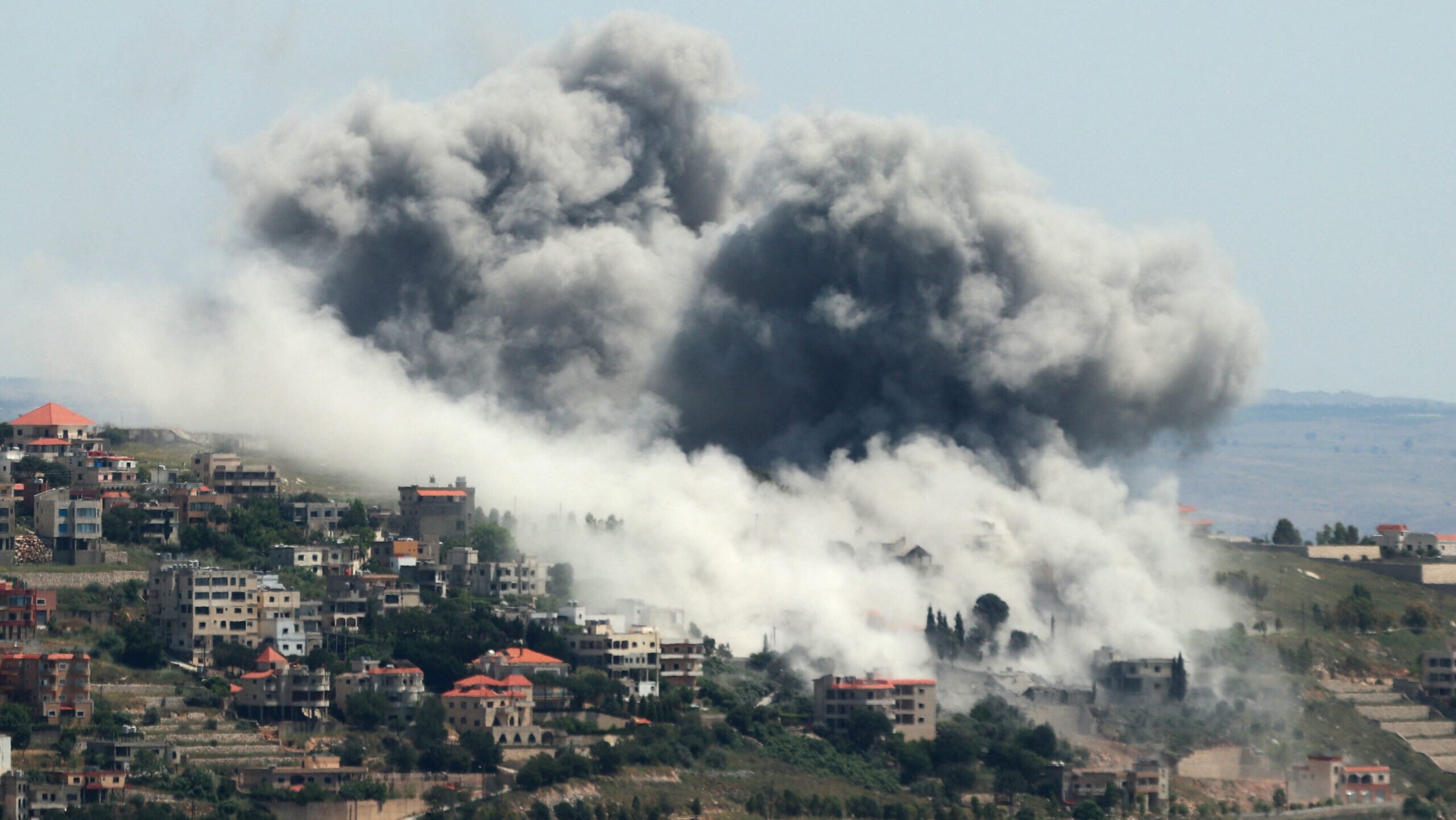
Smoke billows from the site of an Israeli airstrike on the southern Lebanese village of Khiam near the border on May 8, 2024 amid ongoing cross-border tensions as fighting continues between Israel and Palestinian Hamas militants in the Gaza Strip. (Rabih DAHER / AFP) (Photo by RABIH DAHER/AFP via Getty Images)
What Comes Next
For those with nowhere to go, or who are stubborn enough to stick it out, the question hanging over everything is what comes next.
Eye witnesses told Breaking Defense that last week was the “harshest” in the region, with Israeli supersonic fighter jets breaking sound barriers every now and then, even throughout the night. And when the Israeli jets take a break, drones linger in the sky, a subtle but sustained reminder to the citizens that this region is at war.
Local media, quoting anonymous sources, has been reporting that a full-scale invasion of Lebanon by Israel is slated for June 15. It’s unclear what’s behind that particular prediction, and it seems like a stretch, as Israel has its hands full with Gaza and would likely face increased public condemnation for expanding across the Lebanese border. But it shows the feeling of fear and paranoia that the worst is yet to come.
Fueling those fears are comments from Israeli Prime Minister Benjamin Netanyahu that Israel is prepared to take a “very strong action” and is preparing “surprising plans” for Lebanon. US State Department spokesperson Matthew Miller said last week the Biden administration was “incredibly concerned” about escalation in the fighting at Lebanon’s southern border and acknowledged that Israel has said it would pursue a “military” solution to the threat from Hezbollah to Israeli citizens at the border if a diplomatic one fails.
RELATED: As Israel and Hezbollah fight heats up, France takes on role of mediator
The status quo of internment exchanges of fire between Hezbollah and Israel will be bad enough for those just trying to live their lives near the border. A full-on invasion from Israel would be devastating. The 34-day war between Lebanon and Israel in 2006 still dwells in the memory of the Lebanese people, and the state as a whole has never fully recovered.
For now, there is simply an air of emptiness in the area and sadness in the voices of villagers. They are living through a war of attrition, paying the bill for a conflict between an armed group and a state, both apparently more focused on the destruction of the other than the lives caught in the crossfire.
France would support Lebanese Armed Forces in southern border security mission: Official
A French official told Breaking Defense that Paris “must be ready” to aid Beirut should it attempt a historic deployment to secure Lebanon’s southern border, where Hezbollah could play spoiler.
